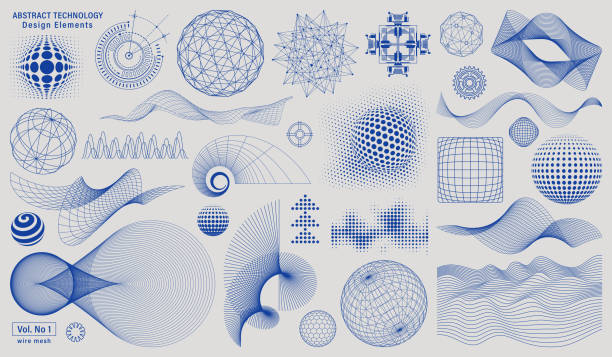Unveiling the Mysteries of Black Holes and Space-Time
Black holes are one of the most fascinating and enigmatic phenomena in the universe. These cosmic objects, once the stuff of science fiction, are now an essential part of modern astrophysics and our understanding of the universe. They challenge the very fabric of space and time, bending the laws of physics in ways that defy human comprehension. Despite the many advances in science, black holes remain a subject of intense research, with much still left to uncover.
This article delves into the mysteries of black holes and the concept of space-time, explaining their nature, how they form, and their significance in our quest to understand the universe.
1. What Are Black Holes?
At its core, a black hole is a region in space where gravity is so strong that not even light can escape from it. This intense gravitational pull occurs because a black hole’s mass is compressed into an incredibly small area, creating a singularity—an infinitely dense point in space. The “event horizon” is the boundary surrounding the black hole. Once an object crosses the event horizon, it is pulled irreversibly into the black hole, unable to escape.
Despite their name, black holes are not empty voids. Instead, they are extremely dense objects that warp the fabric of space-time around them. Their gravitational pull is so powerful that it distorts the space-time continuum, a concept that we will explore further in this article.
2. The Formation of Black Holes
Black holes form from the remnants of massive stars. When a massive star—typically around 20 times the mass of the Sun—reaches the end of its life cycle, it undergoes a supernova explosion. This explosion results in the collapse of the star’s core, and depending on the mass of the core, it can collapse to form a black hole. The greater the mass, the greater the gravitational force, which can cause a singularity to form.
There are three main types of black holes, categorized by their mass and size:
- Stellar Black Holes: These are the most common type of black hole, formed when a star with at least 20 times the mass of the Sun collapses under its own gravity.
- Supermassive Black Holes: These black holes are millions or even billions of times more massive than the Sun. They are believed to reside at the centers of most galaxies, including our own Milky Way. The exact mechanism behind their formation is still unclear, though they may have grown over billions of years by accreting matter from their surroundings.
- Intermediate Black Holes: These are black holes with masses between stellar and supermassive black holes. They are more difficult to detect and understand but have been found in a few galactic clusters.
3. Space-Time: The Fabric of the Universe
To understand the role of black holes, one must first comprehend the concept of space-time—a four-dimensional continuum that blends the three dimensions of space (length, width, and height) with the fourth dimension of time. This unified model of space-time was first introduced by Albert Einstein in his theory of general relativity, which revolutionized our understanding of gravity and the universe.
In simple terms, space-time describes how objects in the universe interact with one another. The mass of an object influences the curvature of space-time, and this curvature determines how objects move within it. The larger the mass of an object, the greater its distortion of space-time. Black holes represent the most extreme example of this curvature, as their gravity is so intense that it creates a “well” in space-time, pulling everything—including light—into it.
4. How Black Holes Affect Space-Time
One of the key features of black holes is their ability to distort space-time to such an extent that the usual laws of physics break down. In fact, near a black hole, space-time becomes severely warped, causing time itself to slow down. This phenomenon is a result of the immense gravitational pull exerted by the black hole.
- Time Dilation: Time behaves differently near a black hole. The stronger the gravitational field, the slower time moves. For instance, if an astronaut were to approach a black hole and observe a distant observer far away from the black hole, they would see that time appears to move faster for the distant observer. From the astronaut’s perspective, time near the black hole would pass more slowly. If they crossed the event horizon, they would experience time in an entirely different manner, as time would appear to stop at the singularity.
- Gravitational Lensing: Due to the distortion of space-time, light passing near a black hole is bent, creating an effect known as gravitational lensing. This effect allows astronomers to observe objects behind a black hole that would otherwise be hidden. The bending of light can reveal information about distant stars, galaxies, and other cosmic phenomena, offering insights into the nature of space-time itself.
5. The Event Horizon: The Point of No Return
The event horizon is one of the most significant features of a black hole. It is the boundary beyond which no information can escape, not even light. Once an object crosses this threshold, it is doomed to be pulled into the singularity.
At the event horizon, the curvature of space-time becomes so extreme that escape velocity exceeds the speed of light. This means that any attempt to escape the gravitational pull of the black hole is futile. If you were to fall into a black hole, you would never be able to send a signal back to the outside world—your fate would be sealed.
Interestingly, from a distant observer’s point of view, as an object approaches the event horizon, it would appear to slow down and eventually freeze in time at the event horizon. This is due to time dilation, which occurs in the extreme gravitational field near the black hole. However, from the perspective of the object falling into the black hole, time would continue normally, and it would eventually reach the singularity, where the laws of physics cease to be well understood.
6. Hawking Radiation: Black Holes Can Evaporate
In 1974, physicist Stephen Hawking proposed a groundbreaking theory that challenged the traditional understanding of black holes. According to Hawking, black holes are not completely black but instead emit radiation due to quantum mechanical effects near the event horizon. This radiation, now known as Hawking radiation, causes black holes to slowly lose mass and energy over time, leading to their eventual evaporation.
The process of Hawking radiation arises from quantum fluctuations, which occur even in the vacuum of space. These fluctuations can create pairs of particles—one with positive energy and one with negative energy. Normally, these pairs annihilate each other and vanish. However, near the event horizon of a black hole, one of the particles may fall into the black hole while the other escapes. The escaping particle carries away energy, causing the black hole to lose mass and, over an incredibly long period of time, potentially evaporate entirely.
Hawking radiation has not yet been observed directly, but it has profound implications for our understanding of black holes and the ultimate fate of the universe. If black holes can indeed evaporate, they might eventually disappear, leaving behind only the radiation they emitted.
7. Black Holes and the Quest for Quantum Gravity
Black holes have become a critical focal point in the quest to unify quantum mechanics and general relativity—two pillars of modern physics that, until now, have remained largely incompatible. General relativity explains gravity on a large scale (e.g., planetary motion and black holes), while quantum mechanics governs the behavior of subatomic particles.
The singularity at the center of a black hole represents a point where the curvature of space-time becomes infinite, which suggests that our current understanding of physics breaks down. This “breakdown” is a key reason why black holes are central to the search for a theory of quantum gravity—a theory that would merge quantum mechanics and general relativity into a single framework.
Several theories have been proposed to address the singularity, including string theory and loop quantum gravity, but a comprehensive theory of quantum gravity remains elusive. Understanding the behavior of black holes may hold the key to unlocking the mysteries of the universe at its most fundamental level.
8. Conclusion
Black holes and space-time are at the heart of some of the most profound questions in modern physics. These enigmatic objects challenge our understanding of gravity, time, and the very fabric of the universe. As scientists continue to study black holes and their interactions with space-time, new revelations are likely to emerge, reshaping our understanding of the cosmos.
From the formation of black holes to the mind-bending effects of time dilation and Hawking radiation, black holes serve as a testbed for the most exciting and enigmatic aspects of physics. While much remains to be discovered, the study of black holes offers a unique window into the deepest mysteries of the universe, bringing us closer to understanding the fundamental laws that govern reality itself.






